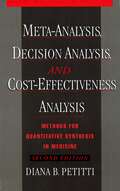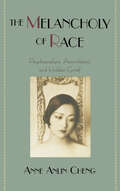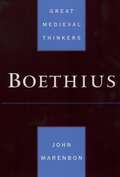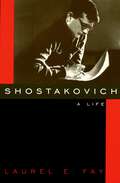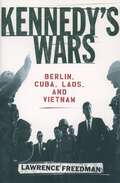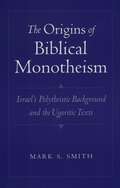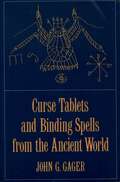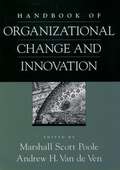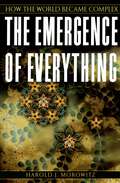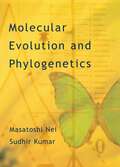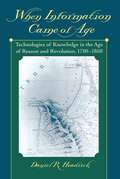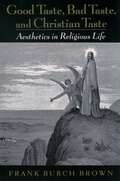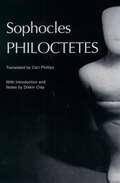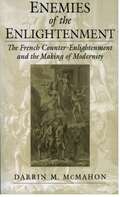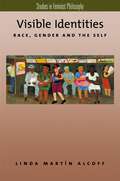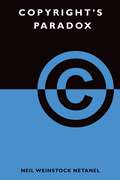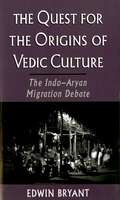- Table View
- List View
Meta-Analysis, Decision Analysis, and Cost-Effectiveness Analysis: Methods for Quantitative Synthesis in Medicine (Monographs in Epidemiology and Biostatistics #31)
by Diana B. PetittiMeta-analysis, decision analysis, and cost-effectiveness analysis are the cornerstones of evidence-based medicine. These related quantitative methods have become essential tools in the formulation of clinical and public policy based on the synthesis of evidence. All three methods are taught with increasing frequency in medical schools and schools of public health and in health policy courses at the undergraduate and graduate level. This book is a lucid introduction, and will serve the needs of students taking introductory courses that cover these topics. It will also be useful to clinicians and policymakers who need to understand the quantitative underpinnings of the methods in order to best apply the information that derives from them. The second edition of this popular book adds new material on cumulative meta-analysis as a method to explore heterogeneity. The coverage of cost-effectiveness analysis has been brought into close alignment with recommendations of the U.S. Public Health Panel on Cost-Effectiveness Analysis in Health and Medicine. Many of the examples have been replaced with more current examples, and all of the material has been updated to reflect recent advances in the methods and the emergence of consensus about some previously controversial issues. analysis. These three closely related methods have become even more important for synthesizing research since the first edition was published in 1994. And they have gained legitimacy as tools for guiding health policy.
The Melancholy of Race: Psychoanalysis, Assimilation, and Hidden Grief (Race and American Culture)
by Anne Anlin ChengIn this groundbreaking, interdisciplinary study Anne Anlin Cheng argues that we have to understand racial grief not only as the result of racism but also as a foundation for racial identity. The Melancholy of Race proposes that racial identification is itself already a melancholic act--a social category that is imaginatively supported through a dynamic of loss and compensation, by which the racial other is at once rejected and retained. Using psychoanalytic theories on mourning and melancholia as inroads into her subject, Cheng offers a closely observed and carefully reasoned account of the minority experience as expressed in works of art by, and about, Asian-Americans and African-Americans. She argues that the racial minority and dominant American culture both suffer from racial melancholia and that this insight is crucial to a productive reimagining of progressive politics. Her discussion ranges from "Flower Drum Song" to "M. Butterfly," Brown v. Board of Education to Anna Deavere Smith's "Twilight," and Invisible Man to The Woman Warrior, in the process demonstrating that racial melancholia permeates our fantasies of citizenship, assimilation, and social health. Her investigations reveal the common interests that social, legal, and literary histories of race have always shared with psychoanalysis, and situates Asian-American and African-American identities in relation to one another within the larger process of American racialization. A provocative look at a timely subject, this study is essential reading for anyone interested in race studies, critical theory, or psychoanalysis.
Boethius (Great Medieval Thinkers)
by John MarenbonThis book offers a brief, accessible introduction to the thought of Boethius. After a survey of Boethius's life and work, Marenbon explicates his theological method, and devotes separate chapters to his arguments about good and evil, fortune, fate and free will, and the problem of divine foreknowledge. Marenbon also traces Boethius's influence on the work of such thinkers as Aquinas and Duns Scotus.
Shostakovich: A Life
by Laurel FayFor this authoritative post-cold-war biography of Shostakovich's illustrious but turbulent career under Soviet rule, Laurel E. Fay has gone back to primary documents: Shostakovich's many letters, concert programs and reviews, newspaper articles, and diaries of his contemporaries. An indefatigable worker, he wrote his arresting music despite deprivations during the Nazi invasion and constant surveillance under Stalin's regime. Shostakovich's life is a fascinating example of the paradoxes of living as an artist under totalitarian rule. In August 1942, his Seventh Symphony, written as a protest against fascism, was performed in Nazi-besieged Leningrad by the city's surviving musicians, and was triumphantly broadcast to the German troops, who had been bombarded beforehand to silence them. Alone among his artistic peers, he survived successive Stalinist cultural purges and won the Stalin Prize five times, yet in 1948 he was dismissed from his conservatory teaching positions, and many of his works were banned from performance. He prudently censored himself, in one case putting aside a work based on Jewish folk poems. Under later regimes he balanced a career as a model Soviet, holding government positions and acting as an international ambassador with his unflagging artistic ambitions. In the years since his death in 1975, many have embraced a view of Shostakovich as a lifelong dissident who encoded anti-Communist messages in his music. This lucid and fascinating biography demonstrates that the reality was much more complex. Laurel Fay's book includes a detailed list of works, a glossary of names, and an extensive bibliography, making it an indispensable resource for future studies of Shostakovich.
Kennedy's Wars: Berlin, Cuba, Laos, and Vietnam
by Lawrence FreedmanIn his thousand-day presidency, John F. Kennedy led America through one of its most difficult and potentially explosive eras. With the Cold War at its height and the threat of communist advances in Europe and the Third World, Kennedy had the unenviable task of maintaining U.S. solidarity without leading the western world into a nuclear catastrophe. In Kennedy's Wars, noted historian Lawrence Freedman draws on the best of Cold War scholarship and newly released government documents to illuminate Kennedy's approach to war and his efforts for peace. He recreates insightfully the political and intellectual milieu of the foreign policy establishment during Kennedy's era with vivid profiles of his top advisors--Robert McNamara, Dean Rusk, Robert Kennedy--and influential figures such as Dean Acheson and Walt Rostow. Tracing the evolution of traditional liberalism into the Cold War liberalism of Kennedy's cabinet, Freedman evaluates their responses to the tensions in Berlin, Cuba, Laos, and Vietnam. He gives each conflict individual attention, showing how foreign policy decisions came to be defined for each new crisis in the light of those that had gone before. The book follows Kennedy as he wrestles with the succession of major conflicts--taking advice, weighing the risks of inadvertently escalating the Cold War into outright military confrontation, exploring diplomatic options, and forming strategic judgments that would eventually prevent a major war during his presidency.
The Origins of Biblical Monotheism: Israel's Polytheistic Background and the Ugaritic Texts
by Mark S. SmithAccording to the Bible, ancient Israel's neighbors worshipped a wide variety of gods. In recent years, scholars have sought a better understanding of this early polytheistic milieu and its relation to Yahweh, the God of Israel. Drawing on ancient Ugaritic texts and looking closely at Ugaritic deities, Mark Smith examines the meaning of "divinity" in the ancient near East and considers how this concept applies to Yahweh.
Curse Tablets and Binding Spells from the Ancient World
by John G. GagerIn the ancient Greco-Roman world, it was common practice to curse or bind an enemy or rival by writing an incantation on a tablet and dedicating it to a god or spirit. These curses or binding spells, commonly called defixiones were intended to bring other people under the power and control of those who commissioned them. More than a thousand such texts, written between the 5th Century B.C.E. and the 5th Century C.E., have been discovered from North Africa to England, and from Syria to Spain. Extending into every aspect of ancient life--athletic and theatrical competitions, judicial proceedings, love affairs, business rivalries, and the recovery of stolen property--they shed light on a new dimension of classical study previously inaccessible. Here, for the first time, these texts have been translated into English with a substantial translator's introduction revealing the cultural, social, and historical context for the texts. This book will interest historians, classicists, scholars of religion, and those concerned with ancient magic.
Handbook of Organizational Change and Innovation
by Marshall Scott Poole / Andrew H. Van de VenIn a world of organizations that are in constant change scholars have long sought to understand and explain how they change. This book introduces research methods that are specifically designed to support the development and evaluation of organizational process theories. The authors are a group of highly regarded experts who have been doing collaborative research on change and development for many years.
The Emergence of Everything: How the World Became Complex
by Harold J. MorowitzWhen the whole is greater than the sum of the parts--indeed, so great that the sum far transcends the parts and represents something utterly new and different--we call that phenomenon emergence. When the chemicals diffusing in the primordial waters came together to form the first living cell, that was emergence. When the activities of the neurons in the brain result in mind, that too is emergence. In The Emergence of Everything, one of the leading scientists involved in the study of complexity, Harold J. Morowitz, takes us on a sweeping tour of the universe, a tour with 28 stops, each one highlighting a particularly important moment of emergence. For instance, Morowitz illuminates the emergence of the stars, the birth of the elements and of the periodic table, and the appearance of solar systems and planets. We look at the emergence of living cells, animals, vertebrates, reptiles, and mammals, leading to the great apes and the appearance of humanity. He also examines tool making, the evolution of language, the invention of agriculture and technology, and the birth of cities. And as he offers these insights into the evolutionary unfolding of our universe, our solar system, and life itself, Morowitz also seeks out the nature of God in the emergent universe, the God posited by Spinoza, Bruno, and Einstein, a God Morowitz argues we can know through a study of the laws of nature. Written by one of our wisest scientists, The Emergence of Everything offers a fascinating new way to look at the universe and the natural world, and it makes an important contribution to the dialogue between science and religion.
Molecular Evolution and Phylogenetics
by Sudhir Kumar Masatoshi NeiDuring the last ten years, remarkable progress has occurred in the study of molecular evolution. Among the most important factors that are responsible for this progress are the development of new statistical methods and advances in computational technology. In particular, phylogenetic analysis of DNA or protein sequences has become a powerful tool for studying molecular evolution. Along with this developing technology, the application of the new statistical and computational methods has become more complicated and there is no comprehensive volume that treats these methods in depth. Molecular Evolution and Phylogenetics fills this gap and present various statistical methods that are easily accessible to general biologists as well as biochemists, bioinformatists and graduate students. The text covers measurement of sequence divergence, construction of phylogenetic trees, statistical tests for detection of positive Darwinian selection, inference of ancestral amino acid sequences, construction of linearized trees, and analysis of allele frequency data. Emphasis is given to practical methods of data analysis, and methods can be learned by working through numerical examples using the computer program MEGA2 that is provided.
When Information Came of Age: Technologies of Knowledge in the Age of Reason and Revolution, 1700-1850
by Daniel R. HeadrickAlthough the Information Age is often described as a new era, a cultural leap springing directly from the invention of modern computers, it is simply the latest step in a long cultural process. Its conceptual roots stretch back to the profound changes that occurred during the Age of Reason and Revolution. When Information Came of Age argues that the key to the present era lies in understanding the systems developed in the eighteenth and early nineteenth centuries to gather, store, transform, display, and communicate information. The book provides a concise and readable survey of the many conceptual developments between 1700 and 1850 and draws connections to leading technologies of today. It documents three breakthroughs in information systems that date to the period: the classification and nomenclature of Linnaeus, the chemical system devised by Lavoisier, and the metric system. It shows how eighteenth-century political arithmeticians and demographers pioneered statistics and graphs as a means for presenting data succinctly and visually. It describes the transformation of cartography from art to science as it incorporated new methods for determining longitude at sea and new data on the measure the arc of the meridian on land. Finally, it looks at the early steps in codifying and transmitting information, including the development of dictionaries, the invention of semaphore telegraphs and naval flag signaling, and the conceptual changes in the use and purpose of postal services. When Information Came of Age shows that like the roots of democracy and industrialization, the foundations of the Information Age were built in the eighteenth and early nineteenth century.
Good Taste, Bad Taste, and Christian Taste: Aesthetics in Religious Life
by Frank Burch BrownChristians frequently come into conflict with themselves and others over such matters as music, popular culture, and worship style. Yet they usually lack any theology of art or taste adequate to deal with aesthetic disputes. In this provocative book, Frank Burch Brown offers a constructive, "ecumenical" approach to artistic taste and aesthetic judgment--a non-elitist but discriminating theological aesthetics that has "teeth but no fangs." While grounded in history and theory, this book takes up such practical questions as: How can one religious community accommodate a variety of artistic tastes? What good or harm can be done by importing music that is worldly in origin into a house of worship? How can the exercise of taste in the making of art be a viable (and sometimes advanced) spiritual discipline? In exploring the complex relation between taste, religious imagination, and faith, Brown offers a new perspective on what it means to be spiritual, religious, and indeed Christian.
Philoctetes (Greek Tragedy in New Translations)
by SophoclesBased on the conviction that only translators who write poetry themselves can properly re-create the celebrated and timeless tragedies of Aeschylus, Sophocles, and Euripides, the Greek Tragedy in New Translations series offers new translations that go beyond the literal meaning of the Greek in order to evoke the poetry of the originals. Under the general editorship of Peter Burian and Alan Shapiro, each volume includes a critical introduction, commentary on the text, full stage directions, and a glossary of the mythical and geographical references in the play. En route to fight the Trojan War, the Greek army has abandoned Philoctetes, after the smell of his festering wound, mysteriously received from a snakebite at a shrine on a small island off Lemnos, makes it unbearable to keep him on ship. Ten years later, an oracle makes it clear that the war cannot be won without the assistance of Philoctetes and his famous bow, inherited from Hercules himself. Philoctetes focuses on the attempt of Neoptolemus and the hero Odysseus to persuade the bowman to sail with them to Troy. First, though, they must assuage his bitterness over having been abandoned, and then win his trust. But how should they do this--through trickery, or with the truth? To what extent do the ends justify the means? To what degree should personal integrity be compromised for the sake of public duty? These are among the questions that Sophocles puts forward in this, one of his most morally complex and penetrating plays.
Enemies of the Enlightenment: The French Counter-Enlightenment and the Making of Modernity
by Darrin M. McMahonCritics have long treated the most important intellectual movement of modern history--the Enlightenment--as if it took shape in the absence of opposition. In this groundbreaking new study, Darrin McMahon demonstrates that, on the contrary, contemporary resistance to the Enlightenment was a major cultural force, shaping and defining the Enlightenment itself from the moment of inception, while giving rise to an entirely new ideological phenomenon-what we have come to think of as the "Right." McMahon skillfully examines the Counter-Enlightenment, showing that it was an extensive, international, and thoroughly modern affair.
Rethinking Criminal Law
by George P. FletcherThis is a reprint of a book first published by Little, Brown in 1978. George Fletcher is working on a new edition, which will be published by Oxford in three volumes, the first of which is scheduled to appear in January of 2001. Rethinking Criminal Law is still perhaps the most influential and often cited theoretical work on American criminal law. This reprint will keep this classic work available until the new edition can be published.
Visible Identities: Race, Gender, and the Self (Studies in Feminist Philosophy)
by Linda Martín AlcoffIn the heated debates over identity politics, few theorists have looked carefully at the conceptualizations of identity assumed by all sides. Visible Identities fills this gap. Drawing on both philosophical sources as well as theories and empirical studies in the social sciences, Martín Alcoff makes a strong case that identities are not like special interests, nor are they doomed to oppositional politics, nor do they inevitably lead to conformism, essentialism, or reductive approaches to judging others. Identities are historical formations and their political implications are open to interpretation. But identities such as race and gender also have a powerful visual and material aspect that eliminativists and social constructionists often underestimate. Visible Identities offers a careful analysis of the political and philosophical worries about identity and argues that these worries are neither supported by the empirical data nor grounded in realistic understandings of what identities are. Martín Alcoff develops a more realistic characterization of identity in general through combining phenomenological approaches to embodiment with hermeneutic concepts of the interpretive horizon. Besides addressing the general contours of social identity, Martín Alcoff develops an account of the material infrastructure of gendered identity, compares and contrasts gender identities with racialized ones, and explores the experiential aspects of racial subjectivity for both whites and non-whites. In several chapters she looks specifically at Latino identity as well, including its relationship to concepts of race, the specific forms of anti-Latino racism, and the politics of mestizo or hybrid identity.
Copyright's Paradox
by Neil Weinstock NetanelProviding a vital economic incentive for much of society's music, art, and literature, copyright is widely considered "the engine of free expression"--but it is also used to stifle news reporting, political commentary, historical scholarship, and even artistic expression. In Copyright's Paradox, Neil Weinstock Netanel explores the tensions between copyright law and free speech, revealing the unacceptable burdens on expression that copyright can impose. Tracing the conflict across both traditional and digital media, Netanel examines the remix and copying culture at the heart of current controversies related to the Google Book Search litigation, YouTube and MySpace, hip-hop music, and digital sampling. The author juxtaposes the dramatic expansion of copyright holders' proprietary control against the individual's newly found ability to digitally cut, paste, edit, remix, and distribute sound recordings, movies, TV programs, graphics, and texts the world over. He tests whether, in light of these and other developments, copyright still serves as a vital engine of free expression and assesses how copyright does--and does not--burden free speech. Taking First Amendment values as his lodestar, Netanel offers a crucial, timely call to redefine the limits of copyright so it can most effectively promote robust debate and expressive diversity--and he presents a definitive blueprint for how this can be accomplished.
The Quest for the Origins of Vedic Culture: The Indo-Aryan Migration Debate
by Edwin BryantWestern scholars have argued that Indian civilization was the joint product of an invading Indo-European people--the "Indo-Aryans"--and indigenous non-Indo European peoples. Although Indian scholars reject this European reconstruction of their country's history, Western scholarship gives little heed to their argument. In this book, Edwin Bryant explores the nature and origins of this fascinating debate.
